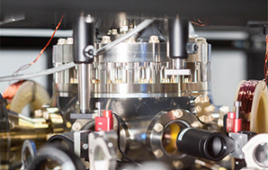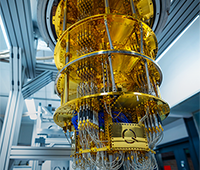In Search of the Magnetic Monopole: LHC Experiment Could Rewrite Laws of Physics
 |
| Visualization of the detector in the Large Hadron Collider’s MoEDAL experiment, which will search for very specific exotic objects, such as the highly ionizing magnetic monopoles and massive, conventionally charged, supersymmetric particles. Courtesy of Jim Pinfold |
An experiment at the Large Hadron Collider (LHC) at CERN, could dramatically change our concepts of basic physics, revolutionize our understanding of the Universe and could eventually lead to technologies in future generations that right now only exist in science fiction.
University of Alberta physics professor James Pinfold is leading an international team of physicists who will use ultra high energy proton collisions. The protons will move at very near the speed of light, in search for a hypothetical particle, called the magnetic monopole.
Conventional understanding of magnets is that they must have north and south poles. In 1930, it was shown that a sub atomic particle with just a single magnetic pole could exist. Several modern theories of physics are built on the theoretical existence of magnetic monopoles.
Last year, researchers in France and Germany reported the observation of certain states of spin ice, a kind of crystalline material with essentially the same atomic arrangements as water ice that would create monopole-like particles. But, Pinfold warns, “these ‘quasi-monopoles’ should not be confused with the real thing being sought by the U of A led collaboration at CERN.”
At CERN, on the Swiss-French border, Pinfold’s team will use the LHC, a particle accelerator 27 kilometers in circumference, to search for magnetic monopoles in the shrapnel-like debris produced by colliding protons. The proton collisions will create unprecedented energy, 14 million electron volts. The tiny fireballs created in the impact will duplicate the energy produced just after the Big Bang, the event that created the universe.



